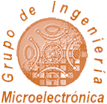
Mapa Web

Localización

Noticias

Info Santander

Gestión BD

|
| GIM>Investigación>Publicación |
| PUBLICACION |
| |
| Ficha completa |
| Título: | Code Generation and Heterogeneous Run-Time Environments for the Co-Verification of Embedded Systems (second increment) |
| Tipo: | Informe, Estudio o Dictamen por encargo |
| Lugar: | Deliverable D3.4 the FP7-216807 SATURN Project |
| Fecha: | 2010-09 |
| Autores: |
Pablo Peñil
Eugenio Villar
Wolfgang Mueller
Da He
Fabian Mischkalla
|
| Líneas: |
Diseño y verificación de sistemas embebidos HW/SW
|
| Proyectos: |
FP7 216807 SATURN
|
| ISBN: | |
| Fichero: |
|
| Resumen: | As the Object-Oriented Model Driven Development (MDD) provides us many advantages such as easy to maintain large applications, high level code reuse and object-oriented analysis etc, it has been already well accepted in the software engineering field. However, this approach is not widely used in the SoCs and Embedded Systems branch yet. In this deliverable the first increment of the SATURN UML 2.0 Profile is presented for UML-based electronic systems design. The profile is based on the Systems Modeling Language (SysML) standard adopted by the OMG. Extended stereotypes and tags are defined for automatic SystemC and C code generation for simulation and FPGA synthesis. The first increment of the SATURN UML profile is composed of two parts: the profile for synthesizable SystemC and the profile for HetSC. For the latter relationships to MARTE and the behavioral semantics are outlined.
Aim of the deliverable:
The deliverable outlines the first increment of the SATURN UML profile for SystemC/C++ comodeling and cosynthesis. The profile and the code generation is defined and implemented for Artisan Studio. Relationsships to MARTE and a first approach to the behavioral semantics are defined in the second part for proven code generation.
|
|
|








